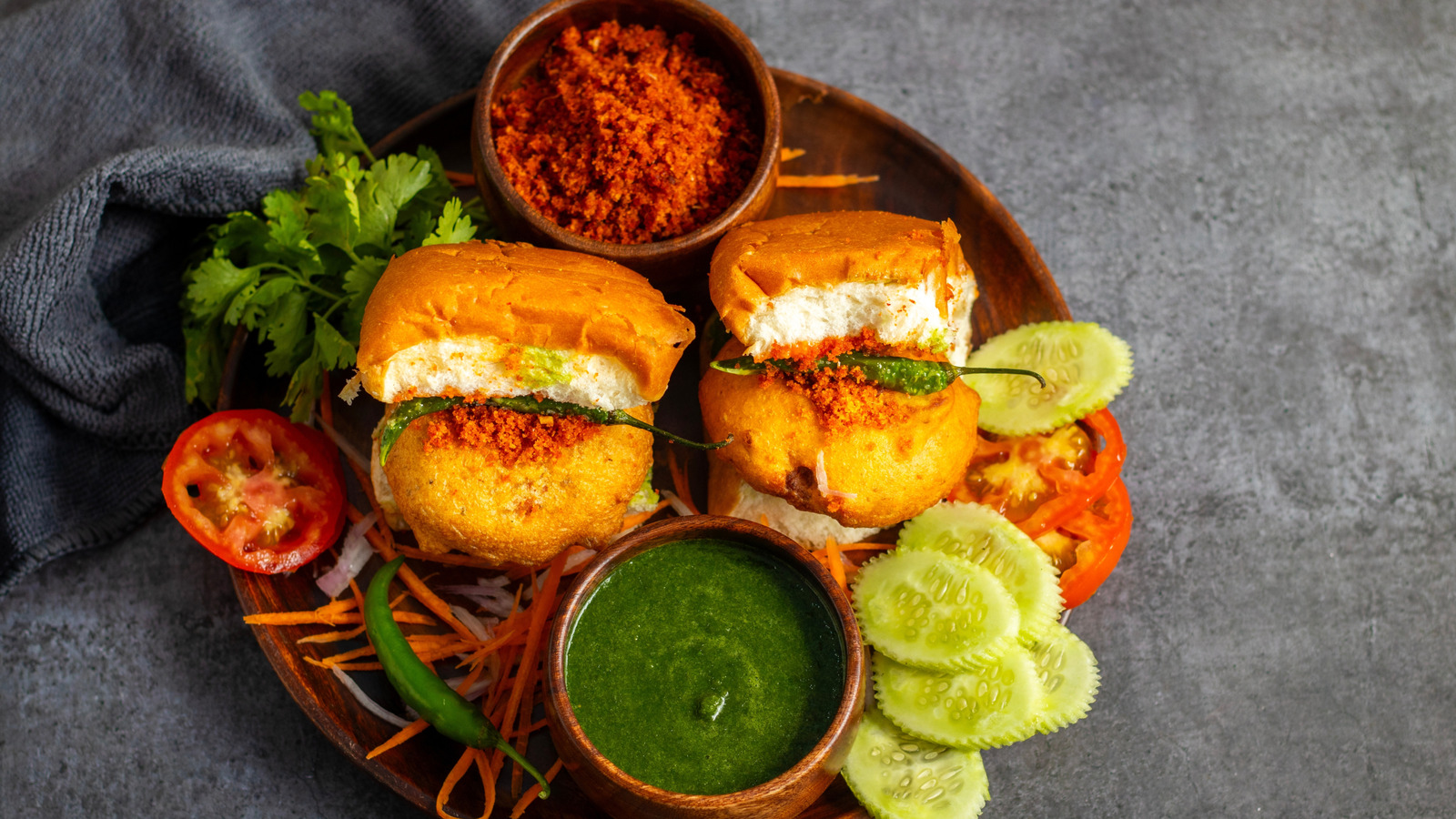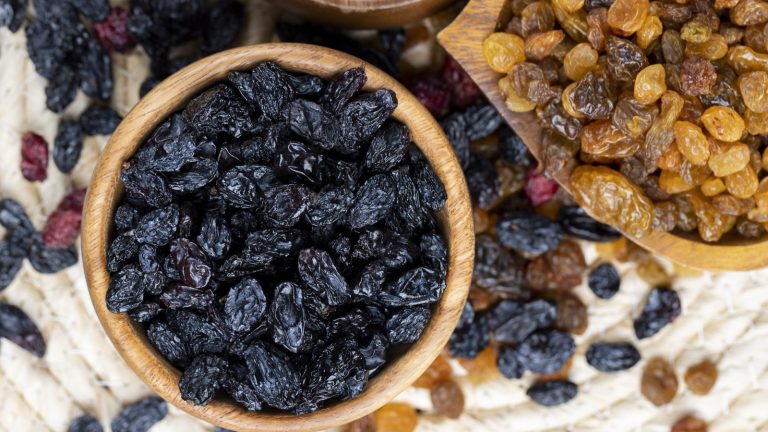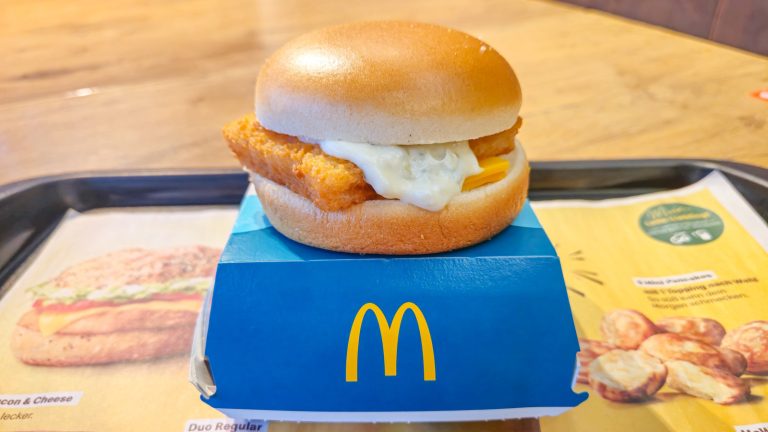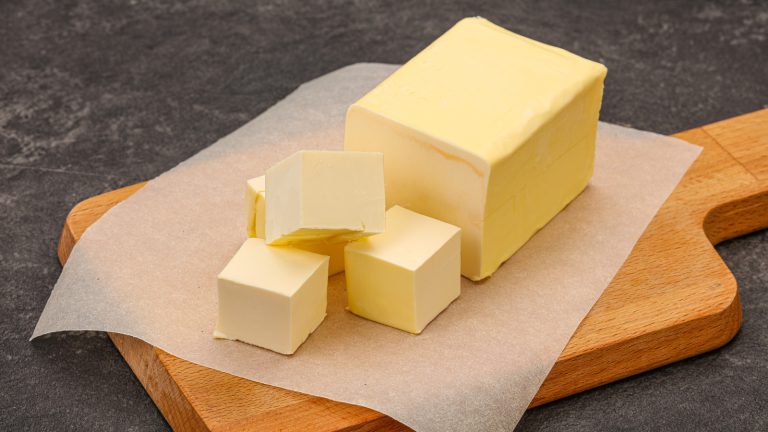What comes to mind when you picture a burger? For many people, that might be an all-beef patty sandwiched in a bun along with toppings like cheese, lettuce, tomato, and onions. However, travel abroad and you’ll find plenty of burgers that don’t follow that model. Some stick to the same basic format but swap in local ingredients. Others flip the script, using different proteins, buns, or preparation styles that reflect regional tastes and food traditions.
Burgers show up on street corners, in home kitchens, and on diner menus around the world, and many of them are unique to the places where they were created. For example, if you order a burger with “the lot” in Australia, beetroot and pineapple will almost always be included as toppings. In Japan, buns aren’t part of the humble hambagu. Then you have places where the patties can be made from reindeer or camel meat instead of beef and the buns can be doused with gravy or slathered with sauce. If you’re looking for some international inspiration for your next burger night, these are 14 unique burgers from around the world worth trying.
Chori burger (Philippines)
In 2024 alone, over two million tourists visited the island of Boracay in the Philippines to soak up the sun, sand, and cerulean sea. However, in the ’90s, it was just starting to take off as a tropical island hotspot. It was around that time that an enterprising street vendor decided to create a snack that would appeal to both local and foreign tastes. The result was the chori burger, a handheld snack that’s slightly spicy, slightly sweet, and perfect for grabbing on the go.
A classic chori burger features chorizo or longganisa (Filipino pork sausage) that’s sliced, grilled and served on a soft white bun. Some vendors also add a beef patty to give the burger a bit more heft. The finishing touch is a sticky sauce that’s made with ingredients like banana ketchup, mayo, and a dash of hot sauce. Chori burgers are typically slider size and served simply with just the sauce, but you can find versions with lettuce, tomato, and other typical burger toppings. If you want to try making chori burgers at home, look for Spanish-style chorizo versus Mexican chorizo because it’s firmer and will give you that satisfying snappy bite.
Yorkshire pudding burger (U.K.)
Few dishes are as British as the Yorkshire pudding, a pastry similar to a popover with a crispy, golden outside and soft, airy interior. It’s made with a simple batter of milk, eggs, and flour whisked until frothy, then poured into a pan or tin greased with beef fat or drippings. As the batter cooks, steam causes the dough to rise. It’s a classic Sunday roast staple often served alongside roast beef drenched in gravy. It’s also a key element of a dish called toad-in-the-hole, which features sausages cooked in Yorkshire pudding. More recently, it’s also found a new role as the bun in the aptly named Yorkshire pudding burger.
It’s hard to pin down exactly who created the Yorkshire pudding burger and when because several people take credit for inventing the dish. However, it seems to have started popping up on pub menus in the mid-2010s. The concept is pretty simple — a burger patty with two Yorkshire puddings instead of buns. Some pub owners have taken the dish one step further and concocted monstrous creations for food challenges that feature mountains of meat sandwiched between Yorkshire puddings the size of dinner plates.
Islak burger (Turkey)
The Turkish islak burger is soft, saucy, and messy enough to hit the spot when you’re hungry and not too picky about staying clean. The name translates to “wet burger” and it refers to the way the entire burger is dunked in a garlic-infused tomato sauce and then steamed to make the bun soft. It’s a favorite late-night snack in Istanbul, particularly around the bustling hub of Taksim Square, where you can find plenty of stands selling the saucy burgers. If you want to go straight to the source, Kizilkaya Hamburger claims to be the birthplace of the islak burger.
There are a few things that set the islak burger apart from other burgers besides the fact that it’s doused in sauce. For one, the beef patty is often seasoned with spices and herbs like cumin, garlic, and parsley. In addition, there are no toppings — just the flavorful seasoned patty and soft sauce-soaked bun. Islak burgers are also on the smaller side, which makes it easy to load up on a few, especially if it’s the end of a big night out and you need something to soak up all those drinks.
Rou Jia Mo (China)
Burgers may not typically be associated with Chinese cuisine, but that’s essentially what rou jia mo is. The name translates roughly to “meat in bread,” and consists of pork belly braised with spices, then chopped, splashed with broth, and piled into flatbread buns (also called mo or mantou buns). It’s a popular street food in Xi’an, a city in the Shaanxi province, where the famous terracotta warriors were discovered. Pork belly is the most common filling, but you can also find versions made with beef and lamb.
The exact origins of rou jia mo are unknown, but some sources say the meat and flatbread combo could date back over 2,000 years, making the dish vastly older than the classic American hamburger. Recipes vary, but the meat is typically braised with an array of ingredients like soy sauce, ginger, galangal, star anise, cardamom, and Sichuan peppercorns. The result is succulent, aromatic meat that gets a boost of flavor from the rich broth and a sprinkling of cilantro. Pile it into a thin, baked bun, and you get a beautiful contrast between the tender meat and crispy bread.
Camel burger (Morocco)
Stroll through the medinas of Fez or Marrakesh in Morocco, and you might come across butcher shops selling camel meat. It’s a pretty common protein in this part of the world, and makes for some seriously tasty burger patties. The meat is leaner than beef, and many say it has a slightly sweet taste that works nicely with the smokiness of the grill and classic burger toppings like cheese, onions, and ketchup. Some food stalls and cafés prepare the patties with a bit of fat from the camel hump to add richness and moisture.
Morocco isn’t the only place where camel meat is popular. Interestingly, Australia is a big exporter of camel meat. In the 19th century, the British introduced camels to the island to help transport goods across the country, but when trains made them redundant, the camels were set free, and the population exploded. Now, you can buy camel meat in all forms, including ground meat that’s perfect for burgers. You may also be able to find camel meat at specialty butcher shops in other countries like the U.S.
Ramly burger (Malaysia)
In Malaysia, the name “Ramly” refers not just to a style of burger, but to a brand of burger patties. The story began in 1979 when a Muslim butcher named Haji Ramly Monki was finding it hard to source legitimate halal meat from vendors in the capital city of Kuala Lumpur. He and his wife decided to start a company that sold only halal certified meat products, including burger patties. The Ramly Group was a huge hit and now it supplies thousands of street food stalls all over the country.
It’s not just the halal certified patty that makes a Ramly burger. The patty is first cooked on a griddle, wrapped in a freshly cracked egg, and served on a toasted, buttered bun. The omelet-like coating helps seal in the juices and soak up sauces like Maggi seasoning, ketchup, black pepper sauce, and Worcestershire sauce. Many versions also include cheese, as well as classic burger toppings like lettuce, tomato, and onion. Some street food stands might also offer shredded cabbage, cucumbers, and curry powder.
Aussie burger (Australia)
When you order a burger with the works in the United States, that could mean a wide array of toppings that vary depending on where you’re getting your burger. However, order a burger with “the lot” in Australia, and it’s usually a pretty standard formula. Your beef patty will almost always be draped with melted cheese (cheddar is the norm) and topped with slices of pineapple, beetroot, bacon, and a fried egg. Lettuce, tomato, and onion often get thrown into the mix along with tomato sauce or barbecue sauce, and everything is sandwiched in a soft bun that may be toasted.
Hamburgers made their way to Australia via American soldiers stationed there during World War II. Over time, the burgers evolved to include local ingredients that catered to Aussie tastes. The beetroot became such a beloved addition that McDonald’s (or Macca’s as it’s called Down Under) even released a McOz burger in 1999 that featured a beef patty topped with cheddar cheese, lettuce, tomato, onion, beetroot, ketchup, and mustard. The sandwich was discontinued in 2008 but periodically returns for limited times.
Bun kebab (Pakistan)
In Karachi, Pakistan, bun kebabs are street food staples that are quick, affordable, and popular with people from all walks of life. Like hamburgers, they feature patties encased in a soft, fluffy bun. However, the ingredients in the patty can vary from stall to stall. You can find versions with shami kebabs (minced beef, lamb, or chicken with lentils), and vegetarian versions with spiced potato or chickpea patties. The patties are often seasoned with spices like coriander and cumin, then dipped in beaten eggs and griddled until sizzling.
The toppings for bun kebabs also differ slightly from your standard American hamburger. While raw onions and tomatoes are popular, you can find shredded cabbage, sliced cucumbers, and a fried egg. And no bun kebab would be complete without a dollop of tangy, spicy chutney. Some vendors also offer raita, a creamy yogurt-based condiment that often includes cooling cucumber and fresh herbs like cilantro and mint. The great thing about bun kebabs is that they’re so versatile. Each vendor puts their own touches on the dish to make it unique, and you can do the same at home.
Reindeer burger (Scandinavia)
In many parts of the world, reindeer are more likely to be associated with Christmas cards than cuisine, but in Scandinavia, they’re part of the local food landscape. The Sami people have been hunting reindeer for centuries and preparing the meat in all manner of ways including roasting, stewing, curing, and grilling. These days, reindeer has even made its way into burgers with numerous restaurants across the region offering their take on the reindeer burger.
Reindeer meat is lean and tends to be tender, with a gamey taste that can add intrigue to burgers. Because it doesn’t have a lot of fat, some chefs mix it with ground beef to make their patties juicier. Other than that though, the meat can be cooked as you would with an all-beef patty and served in a bun with all your favorite toppings. If you want a Scandinavian twist, consider adding a sweet and tangy lingonberry jam to your burger. If you can’t find lingonberry jam, cranberry sauce is a good substitute, especially if you’re leaning into the holiday spirit.
Hambagu (Japan)
Order a hamburger at a restaurant that’s not a fast food joint in Japan and you’ll get something that looks slightly different from what you were expecting. That’s because the hambagu is a ground beef steak served without a bun. It’s similar to a classic Salisbury steak in that the meat is often seasoned with onions, bulked up with panko bread crumbs, and bound together with egg. The patty is then pan-fried and served with sauce (usually soy-based) and often rice and vegetables on the side.
Much like the hamburger, the hambagu can be traced back to the 13th century. At that time, the Tartars would store meat underneath their saddles to tenderize it as they rode their horses. When it was time to eat, the meat was minced into small pieces and eaten raw. The dish spread to Europe, where it became known as tartare. In Hamburg, Germany, it took on another form when people began forming the meat into patties and cooking it. The Hamburg-style meat spread to other parts of the world like Japan, where it became known as hambagu, and America, where ground beef was (and sometimes still is) called hamburger. The addition of buns happened around the turn of the 20th century in the U.S.
X-Tudo (Brazil)
You’d be hard-pressed to find a more over-the-top burger than Brazil’s X-Tudo. Recipes vary depending on the cook and the burger joint, but you can expect a variety of meats like beef patties, bacon, sausage links, and ham. Also stacked between the buns, you’ll find an array of toppings like cheese, lettuce, tomatoes, onions, corn, fried egg, and even shoestring fries. And, of course, sauces like ketchup, mayo, and mustard. It’s a beast of a burger that’s not the easiest to eat and mercilessly messy, but it will also fill you up for hours.
The name X-Tudo may sound like it’s based on the word “extreme,” but it’s actually a play on English and Portuguese words. In Brazil, the letter “X” is often pronounced as “chi,” which sounds similar to cheese. Tudo means “everything” in Portuguese. Therefore, the X-Tudo burger translates to a cheeseburger with everything. Other variations include the X-Burguer (a regular cheeseburger), the X-Salada (a cheeseburger with lettuce and tomato), and the X-Franga (a chicken cheeseburger).
Bulgogi burger (Korea)
Bulgogi is an iconic Korean dish that features thin strips of beef that are marinated and grilled or pan-fried. The marinade is what makes the dish, as it gives the beef sweet, salty, and umami notes. It typically features ingredients like soy sauce, brown sugar, garlic, sesame oil, and pear juice. Traditionally, bulgogi is eaten with rice, but people have been enjoying it in burger form since the ’90s. That’s when Korean fast food chain Lotteria introduced the bulgogi burger, a beef patty slathered in bulgogi sauce and sandwiched in a soft bun.
The bulgogi burger would become a beloved favorite in Korea and abroad, with countless people replicating the recipe and putting their own spins on it. Some feature regular beef burger patties brushed with tangy bulgogi sauce and extra condiments like kimchi or gochujang mayo. Others incorporate bulgogi flavors directly into the patties by adding splashes of soy sauce and sesame oil, sliced green onions, and sesame seeds. And there’s nothing to say you couldn’t make homemade beef bulgogi and slap it into a bun, although it might be more of a steak sandwich than a burger.
Vada pav (India)
Mumbai is a paradise for street food lovers, and one of the most popular dishes you can grab at roadside stalls is vada pav. It consists of a mashed potato patty called a vada seasoned with onions, green chiles, and spices like coriander. The patty is dipped in chickpea flour batter, then fried and served in a soft bun called a pav. The “Indian burger” is often topped with chutney, then wrapped in newspaper and served with a side of whole green chilies.
Legend has it that the vada pav was created by an enterprising food vendor, Ashok Vaidya, in the ’60s. When he first set up camp near Dadar Station in Mumbai, he sold vada and poha, a flattened rice dish. One of the vendors nearby was selling omelettes in pav, so he got the idea to put vada in a pav and the dish was an instant hit. Today, you can find countless vada pav vendors in the city. And, although several chain restaurants have tried to offer the dish on their menus, many Mumbaikars still prefer to get their vada pav fix on the streets.
Bøfsandwich (Denmark)
While Anthony Bourdain argued that you should be able to eat a burger with one hand, the Danes might disagree. After all, it would be pretty hard to scoop up the beloved bøfsandwich with one hand or even two. That’s because this bulky burger is packed with slippery condiments and the entire thing is drenched in gravy. Think of it like a mash-up between a Salisbury steak and a burger. It first appeared on the culinary scene in the 1950s and is a beloved dish in the Jutland region where it was born.
According to De Brune Riddere, a website dedicated to all things bøfsandwich, there are several elements a true bøfsandwich must have. These include a soft bun slathered with brown mustard and topped with pickled beets and cucumbers, raw diced onions, and ketchup. On top of that goes a grilled beef patty followed by grilled onions and remoulade made with mayo and piccalilli. Then the top bun goes on, and the burger gets doused with gravy. The final touch is a sprinkling of crispy fried onions.





